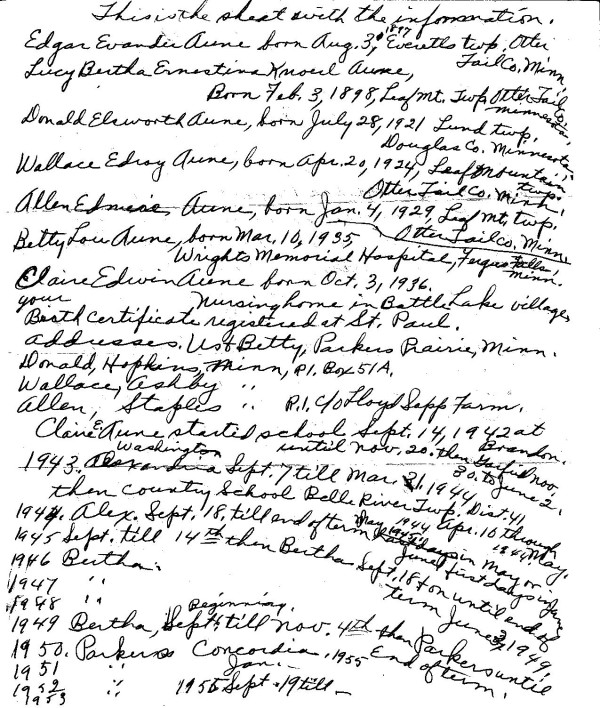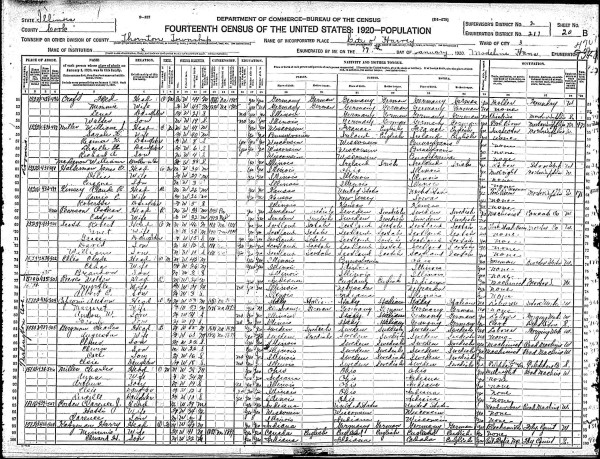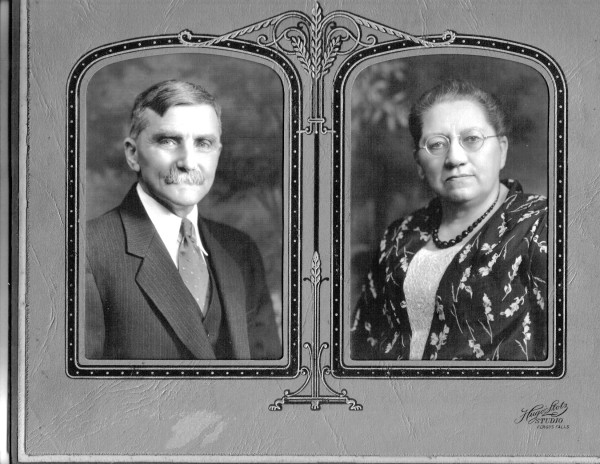This is Part 2 in a two-part series on combining travel with genealogy – specifically Norwegian genealogy. Check out Part 1, Finding My Roots in Norway.
Combining a love of travel with a curiosity about your family tree can be incredibly rewarding. It can also be incredibly frustrating, a journey that may be full of false leads and dead ends.
When I started researching my family’s history in 2005, I got very lucky in that Norway (home to my father’s ancestors) has digitized their census records and placed them in a searchable database online. On the other hand, I have tried to track down ancestors in Germany with no luck – my guess is that the country’s turbulent history, inconsistent borders and extensive war damage are all partly to blame. And my searches for my English, Irish and Swedish relatives haven’t gotten me outside of the United States yet.
Getting Started
The first, most obvious step is to start with what you know. Find out whatever you can from your parents and extended family. I started with my dad’s side of the family because they had the best records – I had a family tree dating back to the early 1800s on my grandfather’s side and a tree going back to the mid 1700s on my grandmother’s side, both including the names of towns overseas where my ancestors once lived. On my mother’s side, all I had was records from my grandfather’s family to the early 1900s and absolutely nothing on my grandmother’s side. If your family hasn’t kept a lot of records, don’t get discouraged. Just think of it as a challenge – and more interesting information for you to discover!

Your next step should be to go online to Ancestry.com, the most comprehensive family history research web site out there (at least in my opinion). Ancestry requires a subscription to access the most useful information, but if you’re serious about finding your roots, it is well worth it. Prices start at $12.95 per month for the U.S. Deluxe Membership and $24.95 for the World Deluxe Membership. With the U.S. Deluxe subscription, you can access original census records across the country, birth and death records, military records, newspaper archives and more. By upgrading to a World Deluxe subscription, you can also access emigration records and a variety of other sources in the United Kingdom, Ireland, Canada and other countries. Ancestry also features message boards, sorted by location or by surname, so you can try to connect with others. I have actually met relatives on both sides of my family while using the message boards!
Other free online resources you might try are Familysearch.org, EllisIsland.org and state and local vital records databases. For example, Cook County, Illinois has a genealogy website that allows you to search for birth, death and marriage records.
Searching
I won’t lie – searching on Ancestry can be a chore. It is important to cast your net widely and to use variable spellings of names. You are searching electronic records that, in most cases, have been transcribed from the original, handwritten documents, so accuracy is not always 100%. When you get your search results, it can be overwhelming. I personally like to start by reviewing the census records, which typically list at least names and ages or birth dates and, in many cases, place of birth, occupation, literacy, citizenship and education information. For states whose birth, death and marriage records are included in Ancestry, those also provide extremely valuable information and can allow you to confirm information found in the census records. Newspaper archives are also great for obituaries, which can provide information not found in more official sources.

It is important to be aware of the user-submitted family trees on Ancestry. You may do a search that shows your ancestor in a family tree that goes back several generations. You might immediately think you have hit the jackpot. But proceed with caution. The user-submitted trees can be a great starting point, but you still need to confirm the information yourself. I recommend trying to contact the person who submitted the tree to find out what their sources are. You never know, it may have come from a long lost cousin!
Warning: Some people go a bit crazy when submitting trees to Ancestry. When I first started, I followed the “roots” of a tree that led to my family being traced back to Charlemagne! Needless to say, there is not much documentation to back that up.
Learning About Naming Practices
When researching your roots, it is important to understand local practices in the country from which your family hails, especially as they pertain to naming. In Norway, they used a patronymic system of naming. A child’s surname was derived from their father’s first name. For example, Nils, the son of Erik, would be known as Nils Eriksen. Likewise, Marit, the daughter of Nils, would be known as Marit Nilsdatter. They also used the names of the farms on which they lived; however, as people moved from one farm to another, that name might change. And of course, people often altered their names when coming to the United States. Interestingly, my great-great-great grandfather immigrated using his farm name – Aune – as his last name and gave that last name to his children born in the United States. However, his oldest children, all born in Norway, used the last name Nilssen (converted to Nelson in the U.S.) as they were all sons of Nils.
A simple Google search for “Norwegian naming practice” brought up a great article that explained this all to me when I started. I recommend doing a similar search for your country of origin. Understanding this background should help you tremendously.
Organizing
If you’re lucky, you will find more information than you know how to handle! Enter Family Tree Maker software. This was a lifesaver for me – the most recent version allows you to create individual records for every member of your family, connecting them together by the appropriate relationship. You can keep track of everything from birth dates and marriage dates to residences to draft registrations to family anecdotes. You can also upload pictures and source information, as well as create family trees in a variety of formats.

Heading Overseas
Roots Traveler provides a nice list of things to consider when planning a trip overseas to explore your roots. If your goal is to further research your family history, I recommend trying to contact someone at a library or historical society in the town where your they once lived. Google definitely is your friend here. You may be able to find a historian to work with you for a fee (I haven’t used it, but GenealogyPro provides what appears to be an expansive directory of professional genealogists worldwide). Or you may get lucky and find a local willing to help you out for free. Other possible sources of information include churches and cemeteries. I actually spent time in Selbu, Norway walking through the cemetery looking at headstones to see if any had my last name. Tedious? Definitely. But you never know what you may find.
Even if you aren’t successful in tracking down specific information about your ancestors while overseas, don’t be discouraged! Use your time in your “home” country to learn about local and regional customs that your family may have practiced or traditional recipes they may have cooked. By the end of your journey, hopefully you will have a better understanding of your heritage and pride about where you come from.
Have you been successful in tracing your roots overseas? What tips would you share?
